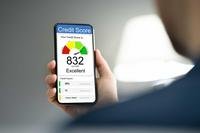One of the biggest challenges that families face is credit card debt. Credit card debt is particularly insidious because it comes with a high rate of interest that can reduce your ability to repay it at a fast rate. It's hard to make a dent in your credit card debt when the bulk of your payment goes toward interest, rather than to actually reducing your debt.
According to a FINRA survey from 2010, one in four military credit card holders have credit card debt of at least $10,000. If you are struggling with debt, and you are sick of it, this might be your year to take charge. Here are some things to keep in mind if you want to start down the path to debt freedom in 2014:
SCRA Protections
First of all, know your rights as a servicemember. The Servicemembers Civil Relief Act (SCRA) makes it possible for you to cap your interest rate on loans, including credit cards. Lenders must cap your interest rate at 6 percent on loans taken out prior to your becoming active. In order to take advantage of this special rate, you need to send a written request to the credit card issuer, and enclose a copy (not the original) of your military orders. This has to be done within 180 days of being released from active duty.
If you have high-interest credit card debt, there is a good chance that you can have the interest reduced if you act fast enough, making it a little easier to tackle your debt and pay it down faster. Talk to a financial professional knowledgeable about military matters for more information on whether or not you qualify, and how you can make it happen.
Identify Extra Money in Your Budget
Once you have reduced your interest rate, it's time to make a plan to repay your credit card debt. The first step is to figure out how to make a little extra money in your budget for additional payments. Look at your spending. Where can you cut back? Is there a way to earn a little extra money?
Identify items that you can spend less on, as well as ways you (or your spouse, if you have one) can make a little extra money. You can use this money as an "extra payment" to speed up your debt reduction process.
Start Paying Off Credit Cards, One at a Time
Now that you know how much extra you can put toward your credit card debt, it's time to start paying off your credit cards. You need to keep paying the minimum on all of your cards, but you can put your "extra payment" toward one of your credit card balances, and work on paying that down extra fast. If you find an extra $100 a month to put toward debt reduction, you add that to your minimum payment, which might be $40. So you are paying $140 a month on the debt.
You keep paying the minimum on all your other credit cards during this time. Once your first credit card is paid off, you take that entire $140 and apply it on top of your next minimum payment. So if you were making a $35 minimum payment on your next card, your new monthly total is $175. As you move forward, you pay off your debt at a faster rate.
Deciding which order to pay your cards off in can be a little tricky, though. If you are able to get all of your credit cards to a 6 percent rate because of the SCRA, you can start with any of the cards you prefer, although starting with the highest balance can be a good move. Others like the quick victory that comes with paying off the smallest balance first. If you have a credit card with a higher rate, start with that.
Tools like ReadyForZero can help you decide on an order for your debts, and help you pay them down in the most efficient way possible. Don't let debt continue to call the shots. You can start paying it down in 2014.
Miranda Marquit is a professional freelance writer who specializes in personal finance topics. She enjoys writing about saving money and paying off debt at the ReadyForZero blog and also writes for her own blog. She lives near Salt Lake City. You can follow @ReadyForZero and @MMarquit on Twitter.S













